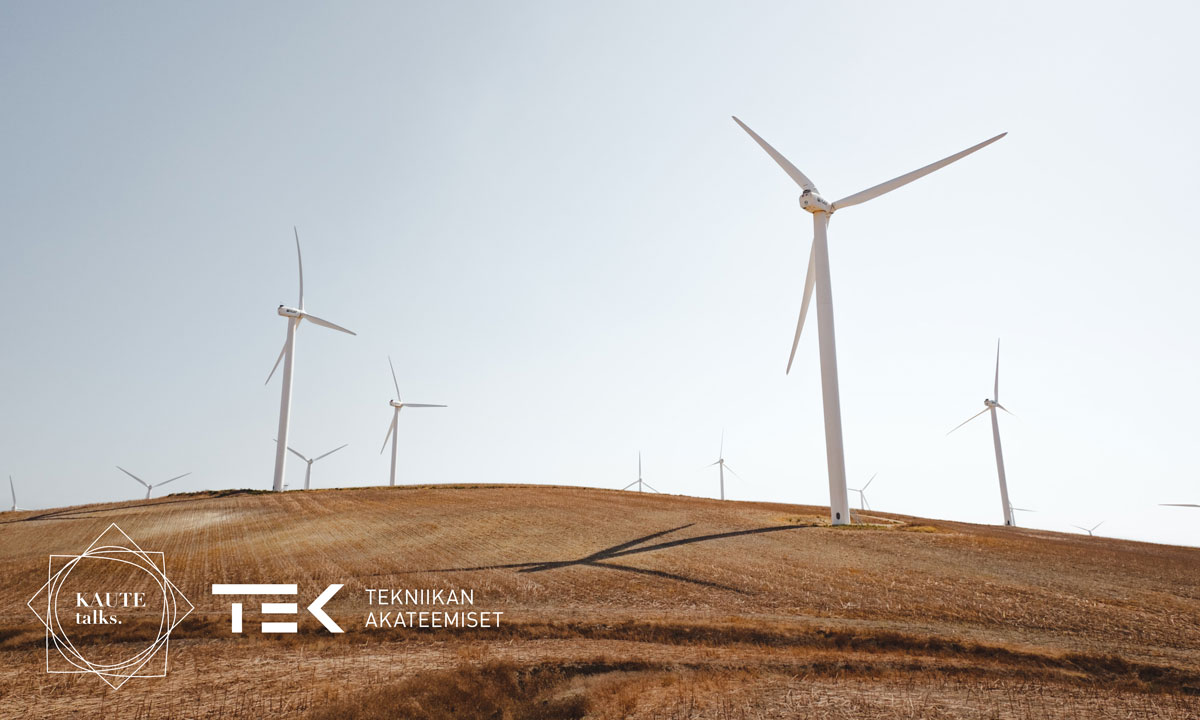The webinar was held on May 5th and was hosted by Jussi-Pekka Teini on behalf of the Academic Engineers and Architects in Finland. Chad Frischmann of Project Drawdown was heard as a keynote speaker. In addition, a panel of Finnish climate professionals were present: CEO of the Climate Leadership Coalition Jouni Keronen, CEO of Ilmastorahasto Oy Paula Laine and an expert in climate policy, Oras Tynkkynen.
What is Drawdown and how can we achieve it? The event was kicked off by a keynote from Chad Frischmann, Senior Director of Research and Technology at Project Drawdown.
“Drawdown is that point in time when atmospheric concentrations of greenhouse gases begin to decline on a year-to-year basis.”
Frischmann introduced a wide range of mostly behavior-based solutions for reaching that point. Including were themes like energy, land use and food system solutions.
“All of these solutions have cascading benefits for both human and planet health. But this only works as a system of solutions. We should not view this as a hierarchical system, but as an ecosystem. All of these solutions are also connected to the Sustainable Development Goals.”
Bringing technologies to maturity
After the keynote, the event opened to a panel discussion with distinguished Finnish experts. The topic of the discussion was comparing mature solutions to those not yet so.
To start off the discussion, host Jussi-Pekka Teini quoted Fatih Birol, executive director of the International Energy Agency in U.S. President Biden’s climate summit on April 23rd in saying that “about half the reductions to get to net-zero emissions in 2050 will need to come from technologies that are not yet ready for market today”.
Jouni Keronen emphasised the role of biofuels in the energy sector transformation and recalled a success story of Neste biofuels – a project that started already in the 1990’s in Finland.
“Finland was also the first country to take the carbon tax in use,” he said.
Reflecting the keynote and its elaborative solutions, Jouni Keronen summed up three big shifts of the future from his point of view: the electricity generation change, the circular economy and finally land-use and nature-based solutions.
The talk turned into funding and Paula Laine, the CEO of Ilmastorahasto, Climate Fund, reminded of the importance of how we think about investing in existing technologies. In R&D in particular: “The global market penetration of mobile phones hit around 80% already in 2010. But, as we all know, some significant R&D funding and advancements in mobile technology were still made the forthcoming years.”
Laine gave an example of more disruptive ways to provide technological solutions to combat climate change like Finnish tech company Solar Foods. Nevertheless, she emphasized, it’s important to remember that in the majority of these cases, even the disruptive solutions are many times complementing the existing solutions.
Oras Tynkkynen saw a major issue in how the market has been organized: “The market is rigged for carbon favouring solutions. If these restrictions would be moved, many solutions now impractical would immediately become deployable.”
As an example of this, Tynkkynen used the production of concrete – how it is very carbon intensive, but also how there are already readily available options for it on the market.
Is there space for Finland in the market?
Outlining Finland’s position and chances in the market, Oras Tynkkynen suggested two possible approaches: First, Finnish companies find a niche in already established markets. For instance, specializing in wind power but in arctic conditions. The second would be trying to find a true competitive advantage. For instance, the advantages of having data centres in Finland are multiple: an appropriate climate to cool down the hardware effectively and stable political conditions to mention a few.
To sum up, Oras Tynkkynen comprised his views in three points: “Firstly, we already have a lot of readily available solutions. Secondly, we need to wind the carbon price up, because it helps to turn upcoming technologies mature business-wise. Thirdly, innovation does not come from thin air – it needs to be invested in.”
Paula Laine immediately commented on the previous: “Actually, sometimes it does, literally – for instance in the case of Solar Foods, where they make protein out of thin air. But my advice for the market would be that there will not be lack of opportunity. While we are in an urgent time frame to solve the climate crisis as humanity, there will be a lot of time for businesses to develop products once those solutions have been decided upon.”
To conclude the very inspiring talk and further elaborate on these themes, Jouni Keronen took the time to promote his newly published book about climate change solutions with Mari Pantzar: Tienhaarassa, “Crossroads”.
Watch the recording of the event:
